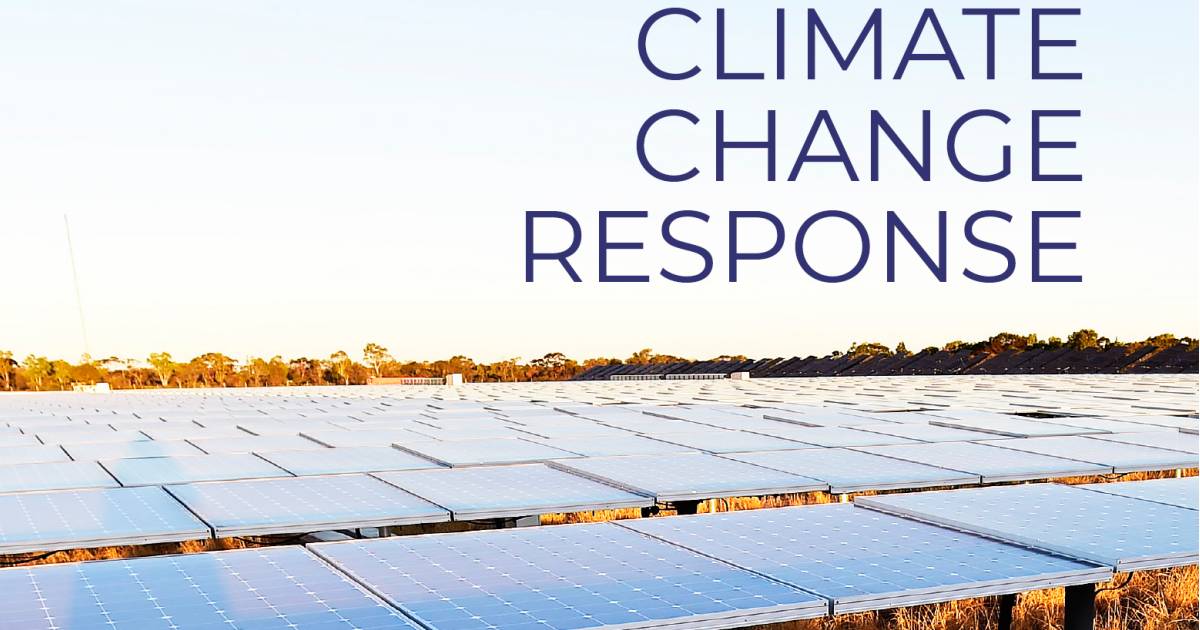There are many references to solar power in the Northern Territory Government’s Draft Climate Change Response, but it treads super-lightly on the topic of hydraulic fracturing, aka fracking.
Released yesterday for public comment, the document outlines the Gunner Labor Government’s approach to addressing climate risk, creating new opportunities in the Territory on the back of renewables and working towards a long-term aspirational target of net zero emissions by 2050.
But given the Global Climate Strike occurring today, perhaps the timing of release wasn’t ideal given some of the devil in the detail.
The document talks a big game on building solar power capacity in the Territory, which is admirable. It recognises solar energy offers the cheapest form of new electricity generation and the plentiful solar resources the Northern Territory enjoys. There’s certainly some exciting solar stuff going on in the NT and the Territory has a target of 50% renewable energy by 2030
The Draft Climate Change Response also recognises the significant risks associated with climate change.
“Climate change threatens everything that makes the Territory lifestyle great and that is why the Territory Labor Government has developed a Response for action,” said NT Minister for Climate Change Eva Lawler, commenting on the document’s release.
Just Don’t Mention The Fracking (Much)
In April last year, Chief Minister Michael Gunner announced his government would permit fracking of onshore unconventional shale gas reservoirs in the NT. While 49% of the Territory would be “frack-free”, the remaining 51% is a big chunk of dirt to potentially frack around in – around 688,000 square kilometres. The Code of Practice for NT’s onshore gas industry was finalised in June this year, with players champing at the bit to get stuck into things.
One of fracking’s many problems is fugitive emissions of methane from leaks in wells, pipes and infrastructure. Methane is a greenhouse gas many times more potent than carbon dioxide.
The Northern Territory Government accepted a recommendation from the Independent Scientific Inquiry into Hydraulic Fracturing that it and the Australian Government seek to ensure no net increase in the lifecycle emissions emitted in Australia from any onshore shale gas produced in the NT.
So, with emissions and climate change being such pressing issues; how’s that going?
The Draft Climate Change Response just states:
“The NT Government is continuing to work with the Australian Government on this matter.”
That’s it.
Some haven’t found “we’re working on it” particularly reassuring given the horse has already bolted and the current Federal government’s approach to emissions.
PCA: Gunner Government Green-washing
Protect Country Alliance has slammed the document, calling it “laughable” and “utter crap“.
“It is incredibly hypocritical for the Gunner Labor Government to try and promote its climate change credentials while it bends over backwards for the polluting fracking industry,” said PCA spokesperson Jesse Hancock. “To talk of solar power and renewable energy industries in this way is just green-washing by the Gunner Government while they plan to ramp up fracking, the biggest new polluting industry we face.”
TAI: Poor Environmental Management
The Australia Institute was also critical of the publication with regard to hydraulic fracturing.
“The new climate paper shows no progress has been made, with official plans to sort out the offsets mess by the end of 2021, well after the industry has set itself up,” said TAI’s Tom Swann. “If the NT government is to comply with its own policy and the Fracking Inquiry, it should immediately stop approving fracking unless and until it ensures all emissions are offset.”
Last year TAI released analysis stating fracking in the Territory could result in an increase in Australia’s *total* greenhouse gas emissions of more than 5%.
That’s a lot to offset – and the nature of the offsets remains to be seen.
Consultation closes on October 31 2019 and feedback can be provided here.


 RSS - Posts
RSS - Posts



Speak Your Mind